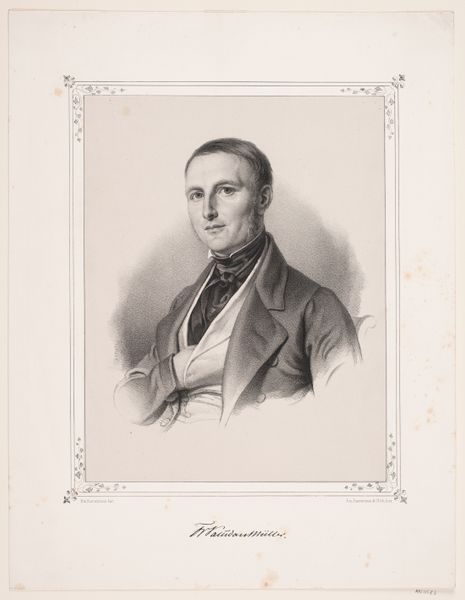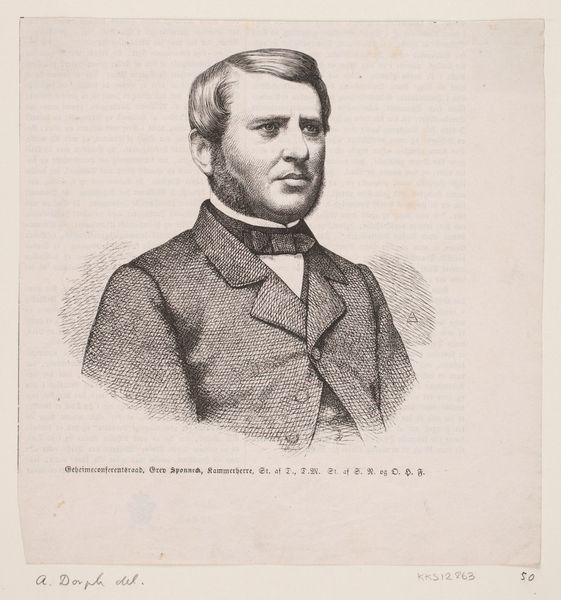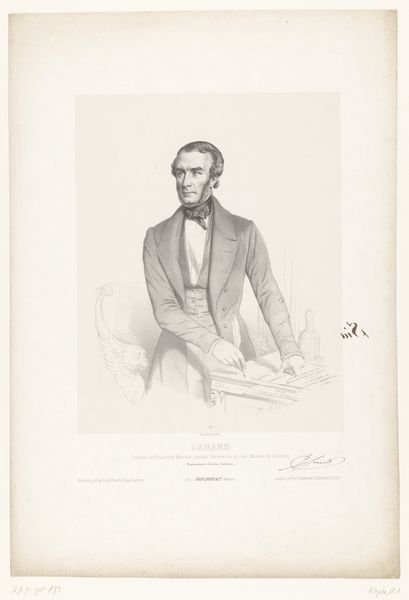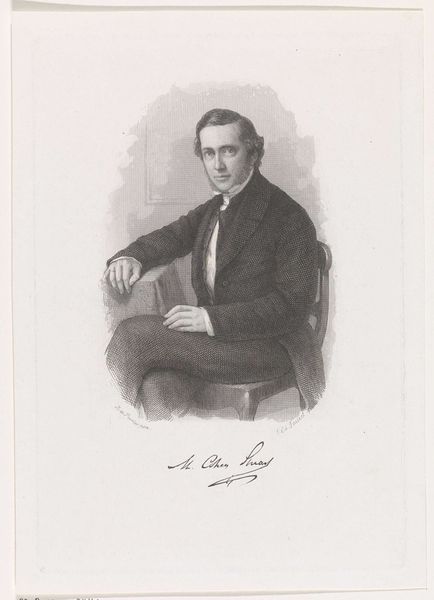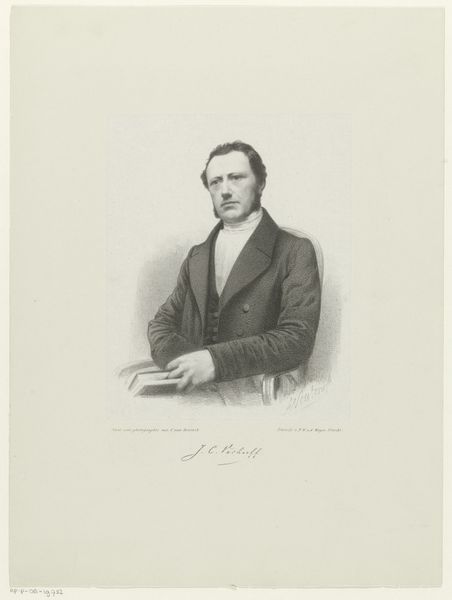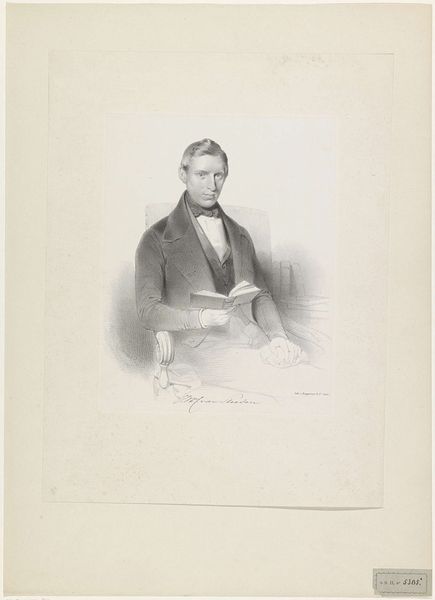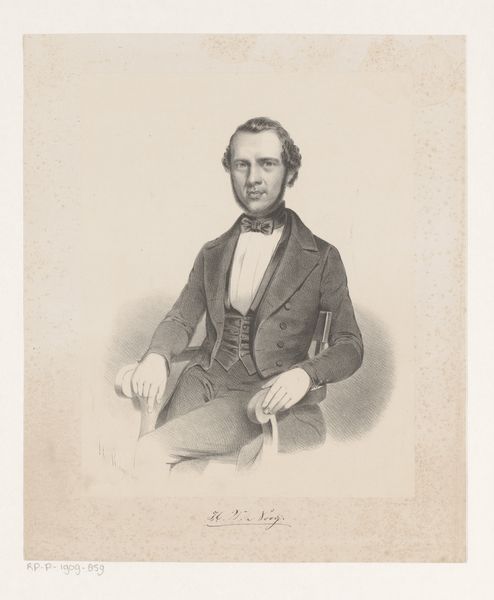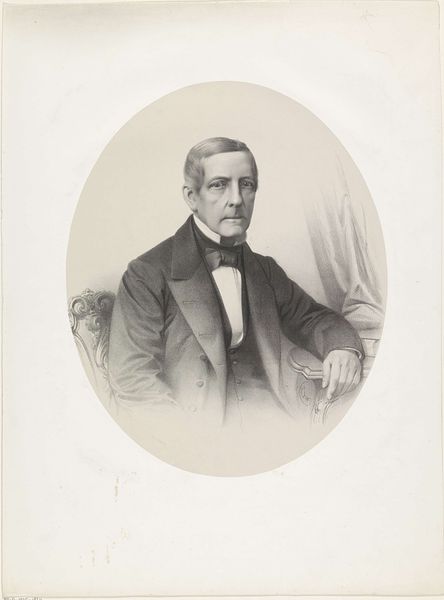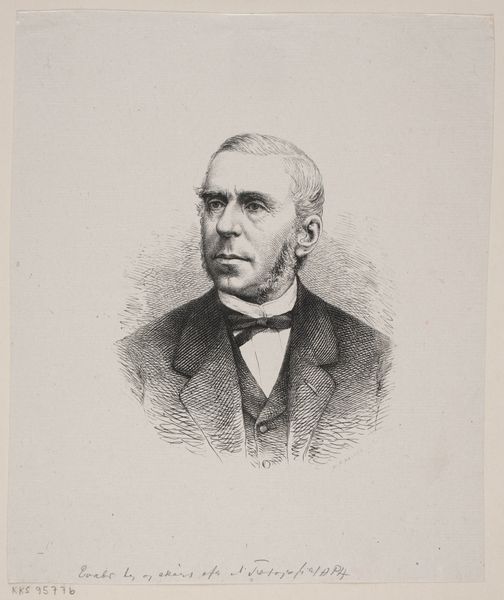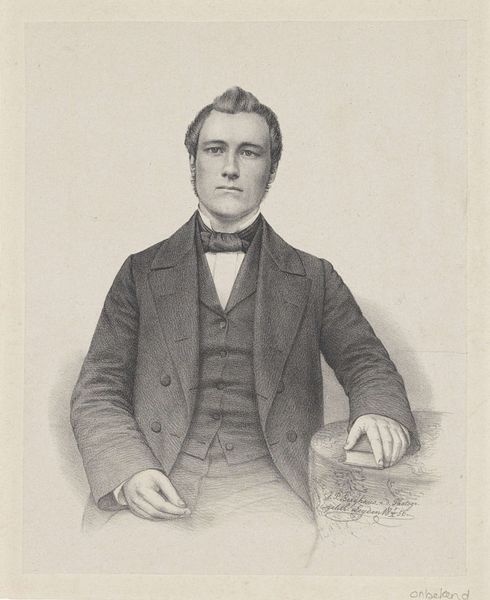
print, engraving
#
portrait
# print
#
engraving
#
realism
Dimensions: 190 mm (height) x 160 mm (width) (bladmaal)
Editor: Here we have an engraving from between 1860 and 1864 entitled "Fr. Stang". It's a realistic portrait. What's striking to me is the subject's pose - arms crossed, a bit formal. What's your take on this piece? Curator: What interests me about this portrait is how it might reflect and reinforce the power dynamics of the time. Given Stang's position, what does the artist seem to be communicating about the figure, and, conversely, how did Stang use images to present himself to the world? Editor: So, you're seeing it as a commentary on class and status? Curator: Exactly. How does realism play into the construction of identity? Consider that photographic portraiture was also on the rise; the decision to produce an engraving may speak to a specific kind of status. What effect do you think the choice of this medium and style might have? Editor: It definitely feels…official. Stiff, even. Almost like it's trying too hard to convey authority. Curator: Precisely. Perhaps it also reinforces traditional hierarchies during a time of social and political upheaval. Who had access to such portraits, and what did it signify to possess one? Editor: That's a really interesting perspective. I was focused on the aesthetic qualities, but I see how the context shifts the whole meaning. Curator: Art never exists in a vacuum. Examining the social conditions in which it's made helps us unravel deeper truths about both the art and the society that produced it. Editor: I'll definitely look at art differently now, considering its historical weight and how it portrays people of the era.
Comments
No comments
Be the first to comment and join the conversation on the ultimate creative platform.

